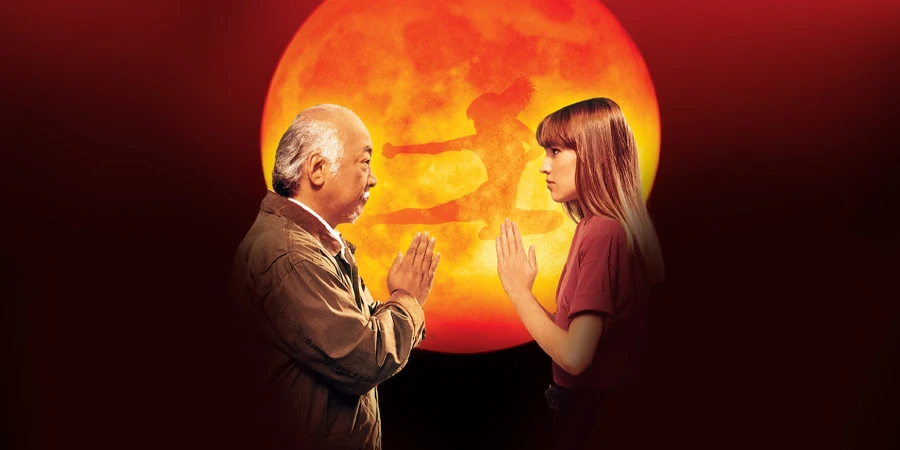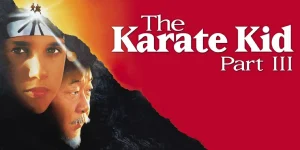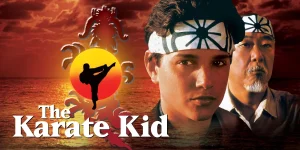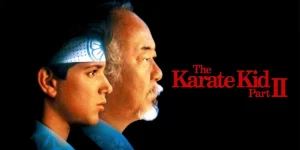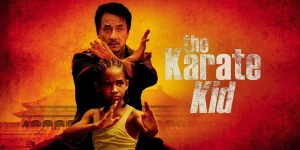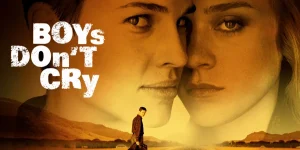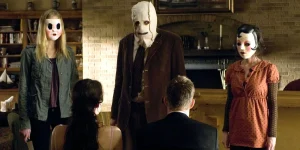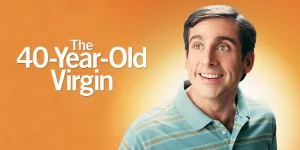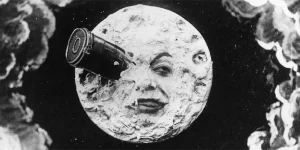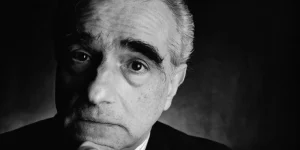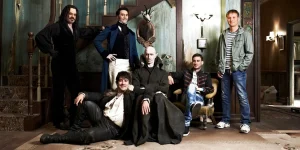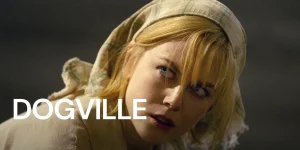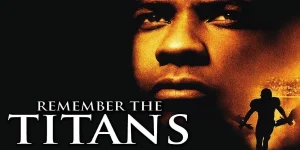The Next Karate Kid (1994) is the fourth installment in the Karate Kid franchise and marks a notable shift in the series by introducing a new protagonist. Directed by Christopher Cain, this film stars Hilary Swank in her breakout role and brings back Pat Morita as the iconic Mr. Miyagi. While the film departs from the Daniel LaRusso storyline, it aims to retain the spirit of the original trilogy—focusing on mentorship, personal growth, and, of course, martial arts.
Table of Contents
ToggleDetailed Summary
Mr. Miyagi’s New Mission
The movie opens with Mr. Miyagi attending a military reunion in Boston. There, he reconnects with Louisa Pierce, the widow of his World War II comrade. Miyagi learns that Louisa is raising her granddaughter, Julie Pierce, who’s struggling with the loss of her parents and acting out at school.
Miyagi offers to stay with Julie for a while to help out—and perhaps do some emotional “gardening,” as he calls it. Julie is hostile and angry, clearly a teenager in pain. She’s rebellious, gets into fights, and even sneaks a baby hawk into her room at school to care for it secretly.
A Different Kind of Student
Miyagi soon discovers that Julie has a background in karate—taught to her as a child by her father, who had learned from Miyagi himself. Though reluctant at first, Julie gradually agrees to train with Miyagi.
This is not just a standard karate training montage. Miyagi takes her to a Buddhist monastery, where she learns patience, meditation, respect, and balance—not only in martial arts, but in life. There’s even a memorable scene where she practices kata blindfolded on a narrow plank while monks meditate nearby. The training helps Julie regain confidence, emotional stability, and self-control.
The Alpha Elite Conflict
Julie’s primary antagonist is not a single bully, but an entire group: the Alpha Elite, a paramilitary-style club at her high school led by the sinister and obsessive Colonel Dugan (played by Michael Ironside). The group preaches dominance and violence under the guise of discipline. One member, Ned, relentlessly bullies Julie and others. His obsession with her turns into intimidation, leading to multiple dangerous confrontations.
Miyagi becomes increasingly concerned about the toxic influence the Alpha Elite has over the school. The administration, meanwhile, is either unaware or indifferent.
Movie Ending
The climax takes place during a night-time school prom, where the Alpha Elite lures Julie and her friend Eric (a compassionate student who’s also targeted by the group) to a construction site under false pretenses. Eric is ambushed and brutally beaten.
Julie, dressed in her formal gown, shows up and confronts Ned, who wants to fight her. Despite being a trained martial artist, Julie hesitates. But when Ned escalates the situation and Eric is threatened again, she steps in.
The final fight between Julie and Ned is surprisingly intense. Julie initially struggles but ultimately uses her training—patience, focus, and precision—to defeat him cleanly. She shows restraint by not retaliating unnecessarily when Ned is down, even when Dugan orders him to keep fighting.
Miyagi steps in when Dugan tries to physically force Julie into a continued confrontation. In a rare moment of aggression, Miyagi fights Dugan himself, showcasing that even in his old age, he’s still a master. He effortlessly disarms and defeats the Colonel without excessive force—once again demonstrating the principle of defense over offense.
The film ends with Julie having regained her self-worth and found inner peace. She dances with Miyagi under the stars at the monastery, smiling and genuinely happy for the first time. It’s a soft, poignant ending, focused more on emotional closure than spectacle.
Are There Post-Credits Scenes?
No, The Next Karate Kid does not include a post-credits scene. The story wraps up completely before the credits roll, and there’s no teaser for a sequel or any additional content afterward.
Type of Movie
This film falls under the genres of teen drama, martial arts, and coming-of-age. It mixes personal struggle with physical training, leaning more on emotional development than high-octane action.
Cast
- Hilary Swank as Julie Pierce
- Pat Morita as Mr. Miyagi
- Michael Ironside as Colonel Dugan
- Chris Conrad as Eric
- Constance Towers as Louisa Pierce
- Michael Cavalieri as Ned
Film Music and Composer
The score was composed by Bill Conti, who also did the music for the earlier Karate Kid films. Conti’s themes once again reflect the emotional undercurrents of the story—soft piano motifs during scenes of introspection and swelling orchestral arrangements for the action and training sequences.
Filming Locations
- Boston, Massachusetts – Primary urban and school scenes were shot here. The city provides a stark, realistic backdrop in contrast to the serene monastery.
- Monastery scenes were filmed in Tarrytown, New York, at the Chuang Yen Monastery, lending an authentic feel to the peaceful training environment.
These settings are crucial in symbolizing Julie’s emotional journey—from the harshness of city life to the calm of spiritual recovery.
Awards and Nominations
The movie did not receive any major awards or critical accolades. However, it has gained some retrospective recognition for featuring Hilary Swank in her first major film role, just a few years before she won two Academy Awards.
Behind the Scenes Insights
- Hilary Swank did most of her own stunts and trained in martial arts for several months before filming.
- Swank has since joked that people forget she was in the Karate Kid franchise, but she credits it as a major stepping stone.
- Pat Morita initially hesitated to return without Ralph Macchio, but agreed after reading the script and liking the direction.
- The monks in the monastery scenes were played by actual practitioners and were not actors.
- Many scenes were toned down to maintain the film’s PG rating, particularly fights involving minors.
Inspirations and References
- Inspired by the original Karate Kid trilogy, the movie shifts focus to a female lead while retaining the key themes: loss, mentorship, bullying, and personal growth.
- The monastery setting reflects real-life Eastern philosophies such as Zen Buddhism, meditation, and ki (inner energy), though filtered through a Hollywood lens.
Alternate Endings and Deleted Scenes
There are no known alternate endings, but several deleted scenes involved more of Julie’s school life and further tension with the Alpha Elite. A cut subplot included deeper insight into Eric’s backstory and how he ended up opposing the group.
Book Adaptations and Differences
A junior novelization of the film exists, expanding on Julie’s inner thoughts and including extra training scenes. However, there is no significant source novel the movie is based on, unlike some other martial arts films of the era.
Memorable Scenes and Quotes
Key Scenes
- Julie saving and nurturing a baby hawk—mirroring her own emotional healing.
- The dance at the monastery with Mr. Miyagi teaching Julie to trust herself.
- The final fight at the construction site and Miyagi’s brief but powerful showdown with Dugan.
- Julie performing kata in front of the monks, blindfolded and completely focused.
Iconic Quotes
- Mr. Miyagi: “Fighting not good. But if must fight… win.”
- Julie: “I didn’t ask for your help.”
- Miyagi: “Then why accept it?”
Easter Eggs and Hidden Details
- Julie’s karate style mirrors Daniel’s, suggesting continuity in the Miyagi-Do technique.
- The hawk symbolizes Julie herself—wounded, isolated, and learning to fly again.
- Mr. Miyagi plants a bonsai tree for Julie, just as he did for Daniel in earlier films.
Trivia
- Hilary Swank would go on to win two Academy Awards for Boys Don’t Cry and Million Dollar Baby.
- This is the only film in the franchise without Ralph Macchio.
- The film was released in 1994, the same year Swank was fired from Beverly Hills, 90210—she considered The Next Karate Kid a turning point.
- Michael Ironside reportedly scared the young cast members even off-camera due to his intense performance.
Why Watch?
Watch The Next Karate Kid if you’re curious about:
- Seeing a young Hilary Swank in a tough, emotional role.
- A new take on the mentor-student dynamic with Mr. Miyagi.
- A more spiritual and character-driven approach to martial arts.
- A story focused on a young woman finding empowerment through discipline and respect.
It may not carry the same nostalgic weight as the original trilogy, but it offers its own heartfelt message and remains a unique chapter in the Karate Kid legacy.
Director’s Other Movies
- Young Guns (1988)
- The Principal (1987)
- Pure Country (1992)
Recommended Films for Fans
- The Karate Kid (1984)
- The Karate Kid Part II (1986)
- The Karate Kid Part III (1989)
- Million Dollar Baby (2004)
- Akeelah and the Bee (2006)
- Whale Rider (2002)

